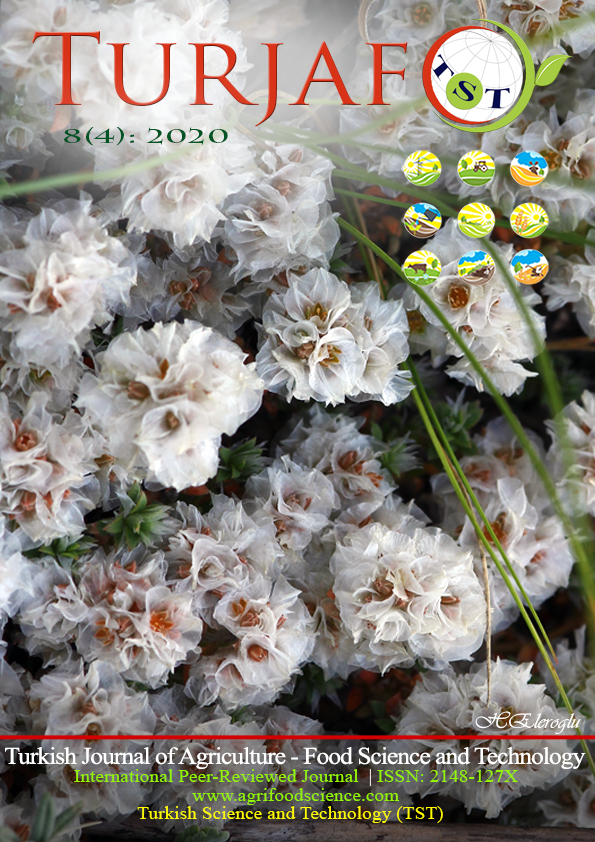Scanning of Dwarfing, Photoperiod Vernalization and Waxy Genes of Lines Carrying Rye Translocation in Reciprocal Recombinant Inbread Line Population Developed in Bread Wheat
DOI:
https://doi.org/10.24925/turjaf.v8i4.912-919.3074Keywords:
Bread wheat, Rye translocation, Ppd, Vrn, Waxy GenesAbstract
The aim of this study is to screen the recombinant inbred lines (RILs) carrying rye translocation for the semi-dwarf (Rht), photoperiod (Ppd) and vernalization (Vrn) genes. Recombinant inbred lines were obtained by hybridization of bread wheat varieties Tosunbey and Tahirova-2000. Only the lines carrying 1BL.1RS rye translocation from population were used in the study. Parents and all of RILs were found to have Rht-B1a, which is a semi-dwarf allele, and Ppd-D1a allele, which is not susceptible to photoperiod. The vernalization alleles (Vrn-A1, Vrn-B1 and Vrn-D1) in the lines were also determined. It was determined that both parents and all the RILs had vrn-A1 allele, and not Vrn-A1c allele. It was determined that 151 of RILs contained vrn-B1 allele and 154 of them contained Vrn-B1 allele, while 131 of RILs had vrn-D1 allele and 174 of them had Vrn-D1 allele. In addition, molecular screening were carried out for waxy alleles (Wx-A1, Wx-B1 and Wx-D1) which were effective on flour swelling, water holding capacity and shelf life of bread wheat. As a result of the molecular data it was found that 141 of RILs carry all three alleles and named as “normal amylose wheat” and 164 of them had only Wx-A1 and Wx-D1 alleles, as known “low amylose wheat”. The results indicated that the population used in the research could be the subject of some researches, especially drought tolerance, and RILs could be used to develop genetic material carrying rye translocation for wheat breeding programs.Downloads
Published
26.04.2020
How to Cite
Güleç, T., & Aydın, N. (2020). Scanning of Dwarfing, Photoperiod Vernalization and Waxy Genes of Lines Carrying Rye Translocation in Reciprocal Recombinant Inbread Line Population Developed in Bread Wheat. Turkish Journal of Agriculture - Food Science and Technology, 8(4), 912–919. https://doi.org/10.24925/turjaf.v8i4.912-919.3074
Issue
Section
Research Paper
License
This work is licensed under a Creative Commons Attribution-NonCommercial 4.0 International License.

























